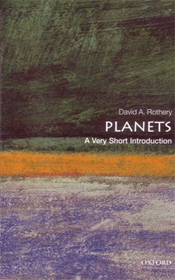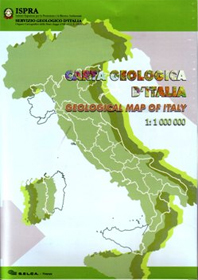
PLANETS: A VERY SHORT INTRODUCTION
This belongs to a series of ‘very short introductions’. The first chapter - Solar Systems – is very condensed writing, full of facts: then come chapters on Rocky Planets; Giant Planets; Giant planets’ satellites and rings, and Asteroids. I found the last named particularly interesting, because we are now really establishing known facts about their nature, on account of actual sampling and close imagery, backing up the earlier reliance on spectrography.
Chapter Six covers Trans-Neptune objects: here we are by contrast groping our way towards a reasonable understanding of these assorted plutoids, which can be Plutinos, Kuiper belt objects or Scattered Disk Objects, and of course also satellites such as Charon. There seems to be a rash of classification at a very early stage of knowledge (dare one say that NASA is rather too keen on classification?). More will be known about these objects when the ‘New Horizons’ mission reaches Pluto (now a Plutino or dwarf planet) in 2015.
Chapter Seven is equally fascinating, covering Exoplanets, of which some 500 or so are now known from our galaxy, despite the fact that the Kepler telescopic mission is covering only a small wedge of it. Rothery estimates that there are 10,000,000,000 exoplanets in our galaxy, of which 100 million may be habitable; but it is anyone’s guess. The mind boggles at the potential population of planets in further galaxies. Exoplanet discovery dates from only 1995, and relies on variations in starlight, transits and even direct observation. A warning here: NASA scientists have defined the ‘habitable zone’ in multiplanet exoplanet systems in which life could exist (based on physical conditions), but so far there has been little consideration of the nature and history of evolution, which is partly controlled by external factors such as planetary development through time, nature of ‘suns’ and configuration of planets. Each planet surely will have its own evolutionary development, sui generis, and none will be like matches of ours? 1
This is an excellent introduction, but not faultless: Figure 10 (Mars) shows an ‘impact crater’ (Rothery’s term) with a surround of a flow of some sort (now lava or slurry?) which must be genetically related to the crater and a similar, older feature, behind. These are not ice sheets. From extensive experience of mapping volcanic terrains on Earth, I think a volcanic explanation is more likely. But this just shows what a wealth of material still awaits specialist interpretation in these fascinating images.
Reference
- McCall, G J H 2011. Are we alone? The evolution factor in the context of the exoplanet-proliferated universe. Abstract, 74th MetSoc Conference, Greeenwich (full text to be published shortly).
Reviewed by: Joe McCall
PLANETS: A VERY SHORT INTRODUCTION
DAVID ROTHERY: Published by Oxford University Press 2010
ISBN: 978-0-19-957350-9 135 (pbk)
List Price £7.99 RRP $11.95 USA

GEOLOGICAL MAP OF ITALY
This most welcome geological map of Italy at one to a million is extremely well drafted so that it packs in an incredible amount of information. The excellent base map is clear to read, including offshore bathymetry highlighting the submerged morphology of the waters surrounding the Apennine peninsula, along with Sicily, Sardinia and Corsica, which is part of the varying overlap with neighbouring countries.
Even if the geological presentation is slightly overwhelming, this comprehensive coverage is beautifully executed, rendering it possible to assimilate fine detail within a unified stratigraphic framework. The captions for both keys are in both Italian & English, and the insert, with the tectonostratigraphic units, are defined in terms of the crust they were derived from during the Hercynian and then Alpine orogenies.
While it is easy for those of us lucky enough to have grown up speaking the international language of science to become complacent, it is a pity that this translation - including the useful bilingual pamphlet explaining the authors’ approach to their work - was not read over by an English-speaking geologist. That said, the text provides an invaluable insight into the complexities of synthesising such varied geology into one coherent overview.
The map itself is divided into over one hundred units, including superficial deposits covering extensive areas, most notably the Po Valley, which clearly displays a number of underlying thrusts in red. Such faults riddle much of the geological detail and yet somehow avoid becoming overwhelming. Given that this map was compiled at 1:500,000 it can only be hoped that it could be used as the basis for a regional series. It will be a long time before many areas receive more detailed coverage, as 1:10,000 surveying was halted a decade ago.
Many of those areas which have been completed have yet to be printed at 1:50,000 and can only be previewed online at www.isprambiente.gov.it/Media/carg/index.html. From here, click on a region to see an index map, where red sheets have been published and orange in press awaiting publication can be selected for interactive viewing, with a ‘zoom’ and ‘explore’ system. This includes satellite imagery, location of boreholes and sinkholes, 1:50,000 sheet lines, and both Bouguer gravity contours and shading.
A discussion of the wider implications of ceasing classical 1:10,000 mapping - both in Italy and now in Britain - can be found online in a longer version of this review.
Reviewed by David Nowell
1:1,000,000 Carta Geologica d’Italia, 5th edn. 2011. B COMPAGNONI AND F GALLUZZO, et al.
Published by: Servizio Geologico d’Italia (Geological Survey of Italy)
Publication date: 2011
List Price unstated, c. €10 (cf. national gravity map), folded only.
W: http://sgi.isprambiente.it/geoportal/catalog/main/home.page